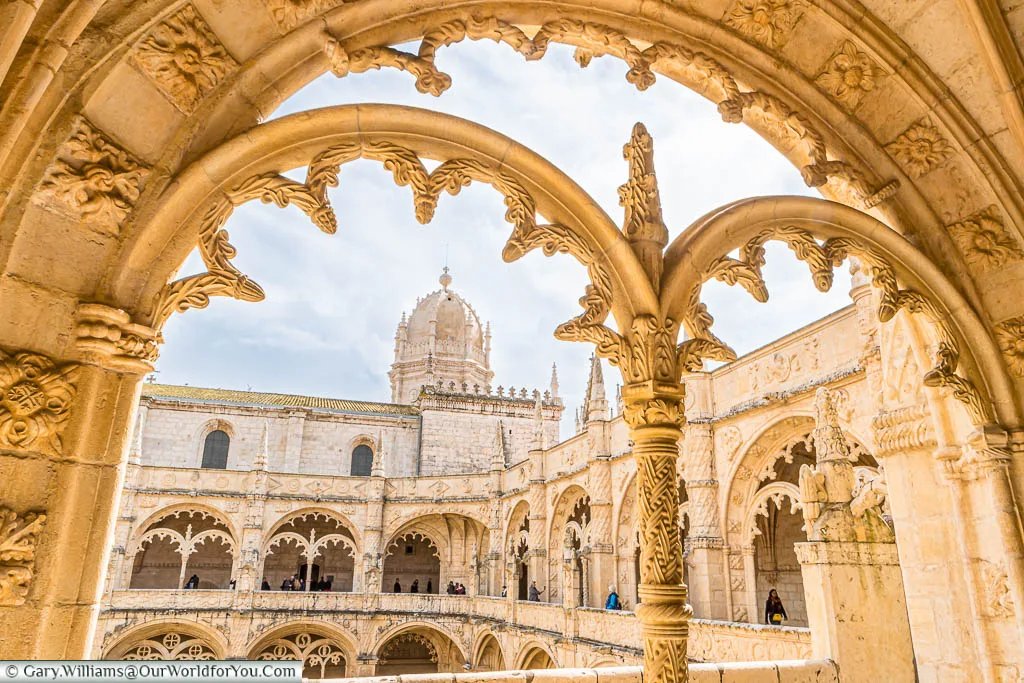What to See, Ride, Taste & Hear around the streets of Lisbon
I really don’t know why Lisbon hadn’t been on our ‘go to’ list earlier. We have been to numerous European cities up until now, but for some reason Lisbon had not really risen to the top.
Well now was the time to put that right, our timing wasn’t perfect in terms of the weather, but we weren’t going to let that put a dampener on our adventure.
Lisbon has so many things to offer; however, one of the standout memories that we brought away were the friendliness of the locals.



The queues at the bottom maybe a little busy at times, so you may want to gauge your arrival time. We were staying not too far from the upper level, so when we arrived the queues were non-existent, and we used our return ticket later in the day when it was quieter.
I would also suggest taking a stroll past the Santa Justa Lift in the evening, as it is quite impressive when it is illuminated.
I love nothing more than planning a trip and so often I use the DK Eyewitness books. This Top 10 Pocket Travel Guide was invaluable to us.
We used a previous version of this book to plan our Lisbon mini-break, now you can grab the revised copy.

The defensive tower was built between 1514-20 and once stood on an island in the Tagus. The northern bank has been gradually built upon and the tower is now accessible to the public along a walkway.
The incredible tower was added to the UNESCO World Heritage List in 1983, along with Jerónimos Monastery which is also in Belém.

Where to stay in Lisbon

The magnificent monastery took 100 years to build and was constructed in the distinctive Manueline style. It is visually impressive from the outside; however, when you step inside it has an incredible internal courtyard and cloisters.
It is certainly worth a visit and then when you’ve finished, you can indulge in a Pastel de Nata in the nearby Pasteis de Belém.





Originally built as the Church of Santa Engrácia it now houses the tombs of some of Portugal’s major historic figures, including a crypt for the legendary footballer Eusébio.
If you have a head for heights, you must take a climb to the top of the Pantheon and step outside of the dome. The incredible views are amazing all along the River Tagus and beyond.

Our particular favourite was Quinta da Regaleira, with its subterranean towers, grottos, underground tunnels and mesmerising waterfalls.
I advise a bit of forward planning when visiting Sintra as it does get very busy, especially at the weekends.




Our tip is to catch the no. 28 earlier along its route, then it weaves you up all through the narrow streets of the Alfama neighbourhood. Jump off near the top and stroll back down, visiting all the historical sites at your leisure.
Also, there are 3 funicular trams, named Glória, Bica & Lavra, adorned with local art.
An addition in recent years are the Tuk tuks, I think you tend to either love them or hate them.


Pastel de Nata
No trip to Lisbon would be complete without sampling these little delicacies.
You can get Pastel de Nata throughout Lisbon; however, our favourites and that of many others is where they were originally created at Pasteis de Belém.

Don’t be put off by the queues, these creamy custard tarts, with their delicious flaky pastry cases are worth waiting for.
Believe me you’ll be hooked.
Ginjinha


Elegant Cafés

This was our first trip to Portugal, and I can certainly see us planning a road trip around the country to discover more of its delightful culture.
We would love to hear if there any places in Portugal that you can recommend?
* This post may contain links to affiliated sites where we earn a small commission at no additional charge to you.

